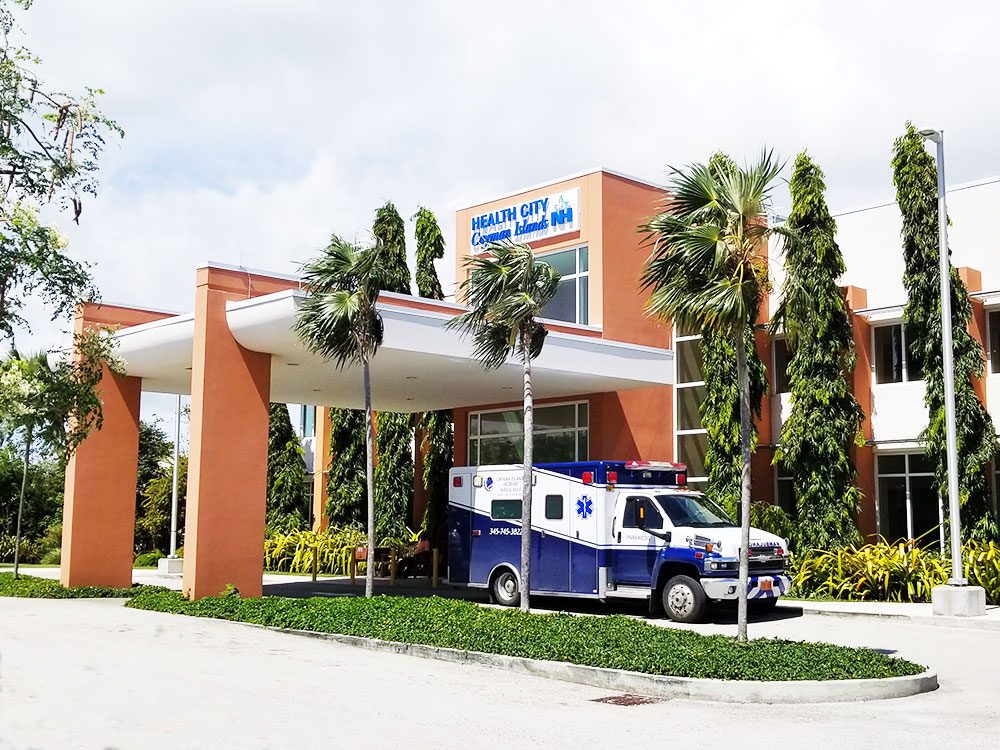
10 Ways This Caribbean Country is Raising the Bar for Medical Tourism
One-hundred-and-forty-three days is a long time to live with debilitating pain. Nevertheless, that’s how long Albertans have to wait, on average, to receive knee replacement surgery, according to a recent report from the Canadian Institute of Health Information.
That wait proved too long for 60-year-old Mark Pilkington, who’d had his right knee replaced in Calgary in June 2016, and then required the same surgery on the other knee. “I started looking for options,” Pilkington says. “I looked down in the States, in Europe, and finally in the Caribbean.”
It was there, in the Cayman Islands, that he found exactly what he was looking for—a high-quality health care facility staffed with skilled surgeons, that could literally book the procedure that he’d have waited months to receive in Calgary within two weeks.
Located on the southern shore of the rugged east end of Grand Cayman, Health City Cayman Islands looks as out-of-place amongst the tropical palms and sun-baked sands as one might expect. The state-of-the-art 104-bed hospital boasts three operating theatres, a full lab for inpatient and outpatient services, and an imaging suite for MRI, gamma camera, nuclear medicine and CT, all wrapped in a hurricane-proof shell. Although services range from cardiology to neurology, Health City’s burgeoning reputation for medical tourism is built on orthopedics (specifically knee, hip and shoulder replacements) and spinal surgeries—the two specialties that tend to have some of the longest wait times in Canada.
Here’s how Health City Cayman Islands checked all of Pilkington’s boxes—and is positioning itself as a leading medical tourism destination for Canadians.
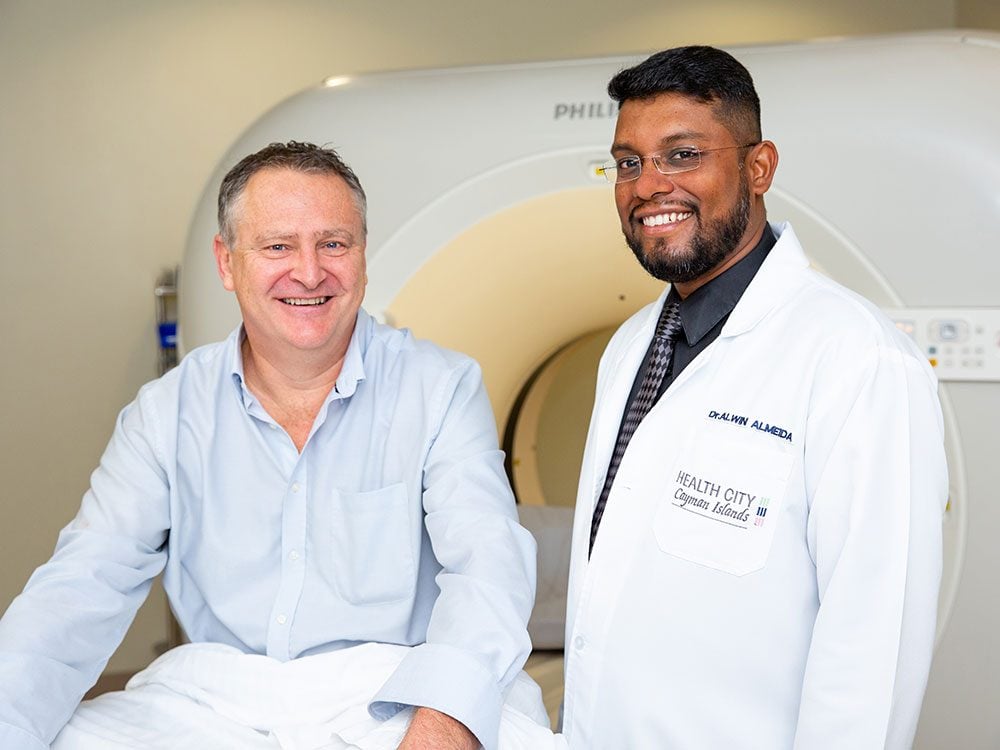
Wait times are virtually non-existent.
As Pilkington—and anyone in line for joint replacement surgery—can attest, waiting is painful. In fact, according to the Fraser Institute, long wait times are the leading reason Canadians seek treatment outside the country. That’s where Shomari Scott, Director of Business Development at Health City Cayman Islands, sees his hospital fitting into the equation.
“We’re not trying to compete with the Canadian health care system,” Scott says. “Rather, we’re offering an alternative to the wait times.”
The rapid turnaround from Pilkington’s first contact with Health City to his actual knee replacement surgery on Grand Cayman isn’t uncommon. Initial inquiries to Health City are responded to within 48 hours (there’s no need for referral from a Canadian doctor), and virtual consultations with the surgeons who actually perform the procedures are available within days.
Pilkington says his virtual consultation with Dr. Alwin Almeida (above), the Health City orthopedic surgeon who ultimately performed his knee replacement, immediately put him at ease. “He was obviously competent, had great interpersonal skills, and answered all of my questions satisfactorily,” Pilkington says.
These are the questions you should always ask your pharmacist when filing a new prescription.
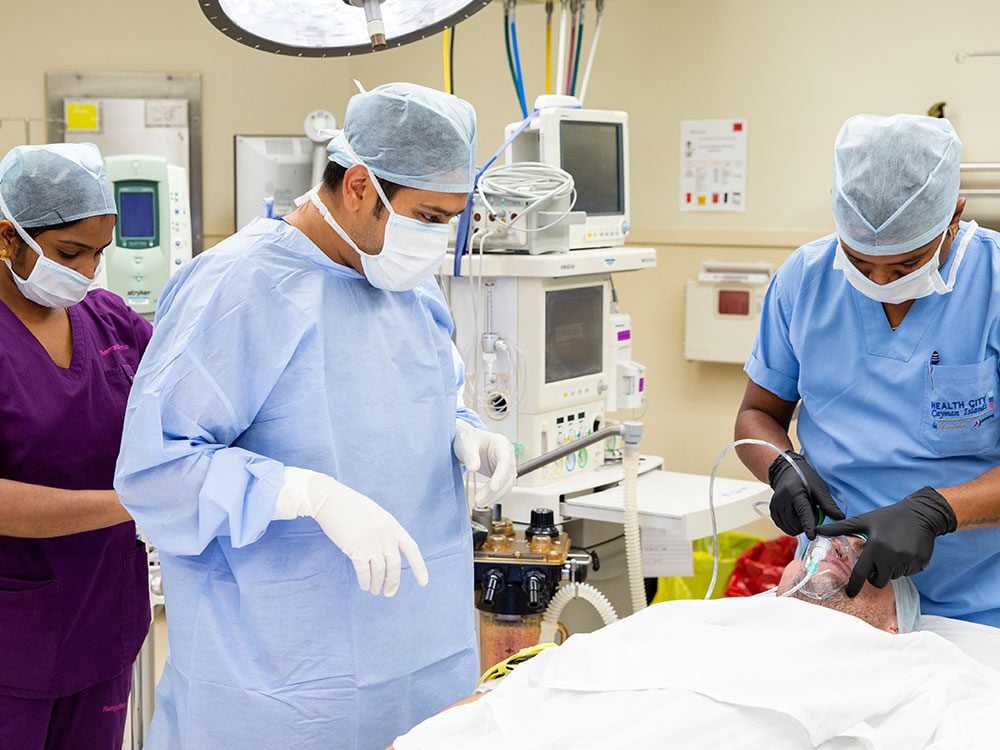
It’s on par with Canadian health care standards.
Coming from a country that’s world-renowned for high-quality health care, it’s only natural for Canadians to approach medical tourism with a degree of skepticism.
Concerns about quality of care were certainly top-of-mind for Pilkington, who narrowed down his search for knee-replacement facilities to those meeting certain criteria. “I only looked at places that were internationally-accredited through JCI,” Pilkington says, referring to Health City’s Joint Commission International seal of approval—considered a gold standard in global healthcare. “It’s a sign of quality that’s consistent with hospitals throughout North America and Europe.”
Health City’s key performance indicators over the past year give no reason to doubt such distinction, either. The low surgical site infection rate (1.3%) and readmission rate (2.8%) are well within Canadian public health care standards, and actually exceed U.S. benchmarks on 37 clinical indicators.
“This is first-world-surgery, and a first-world facility,” Pilkington says.
Here are 10 germ-spreading habits to give up now.
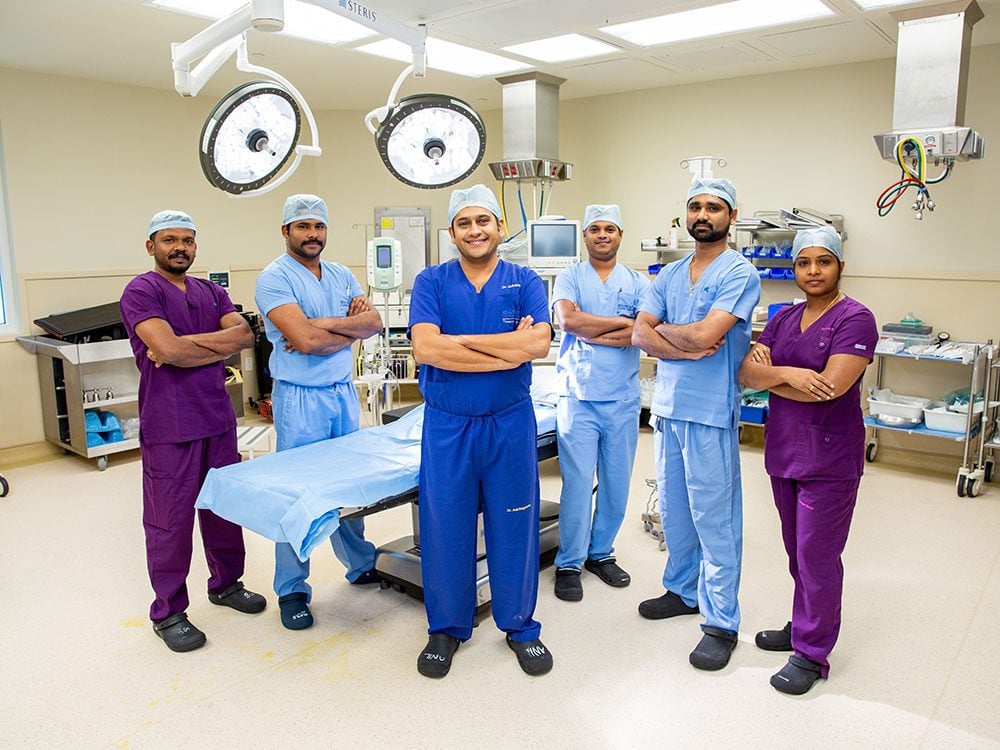
It’s based on a proven model.
There’s a reason Health City founder Dr. Devi Shetty has been dubbed the “Henry Ford of heart surgery.” Shetty, who served as Mother Theresa’s personal physician, is renowned in his native India for developing a mass-production model for hospitals, geared towards high patient turnover and low operating costs. The facility in the Cayman Islands employs the same formula as Shetty’s 23 Indian hospitals, with many of its staff of health care professionals hailing from India themselves. It’s a model that seems to be working, as in the five years since its doors opened, Health City Cayman Islands has hosted more than 1,000 international patient procedures—10 per cent of whom have been Canadian.
These are the doctor appointment mistakes you didn’t realize you were making.
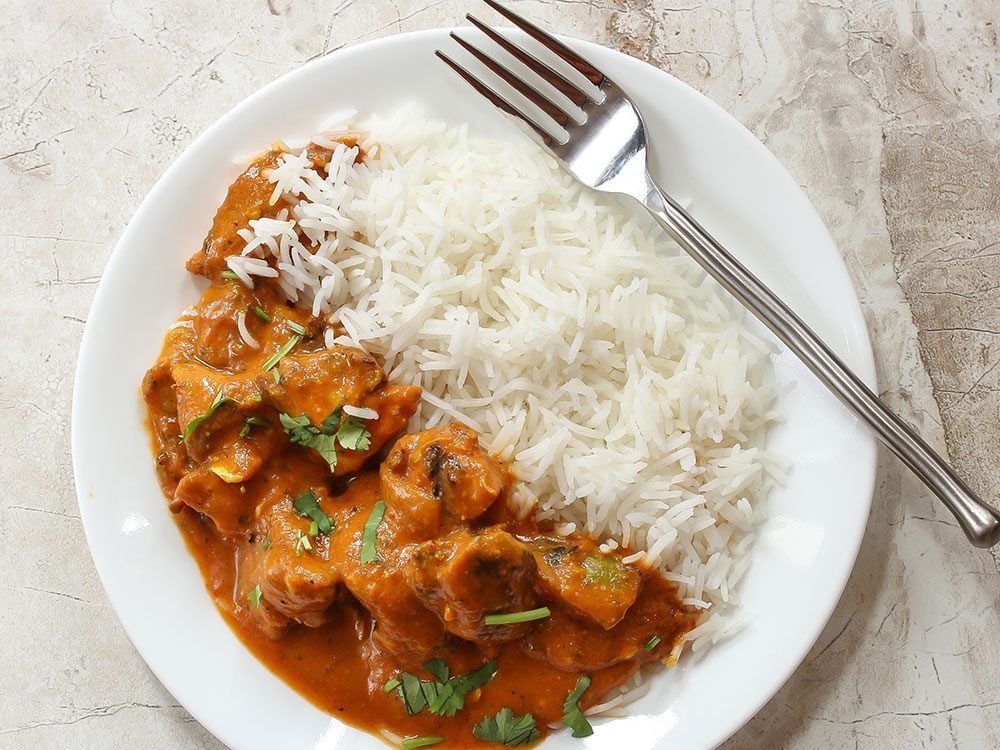
It’ll challenge your perception of “hospital food.”
What other hospital can claim to double as one of the hottest lunch spots in town? A far cry from the microwave dinners Canadians have come to expect from hospital food, the culinary delights at Health City (both in patient rooms and in the cafeteria) are catered by the award-winning George Town restaurant, Blue Cilantro. With meal prep handled on-site and using locally-sourced ingredients whenever possible, Chef Vidyadhara Shetty (no relation to the hospital’s founder) has elevated the hospital canteen to the point where it’s widely regarded as the best place on the island to enjoy a traditional Indian curry. Health City inpatients work with the hospital’s two on-staff dietitians to develop custom meal plans from Shetty’s mouthwatering menu.
Believe it or not, these foods can help ease knee pain.
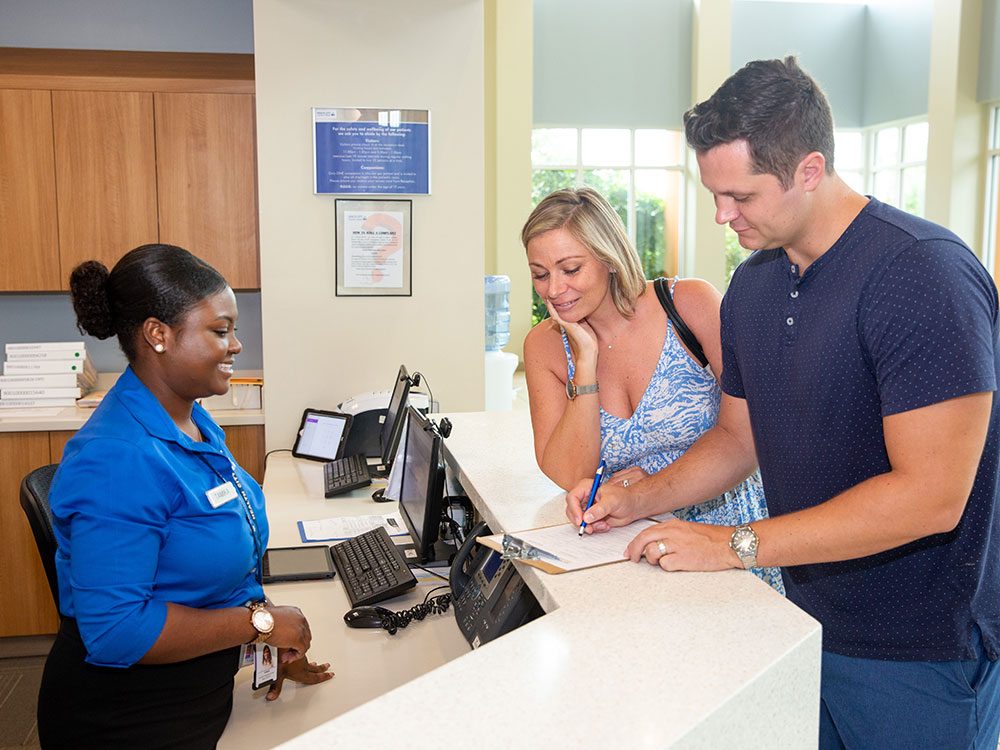
It’s not restricted to the rich.
Provincial health care coverage doesn’t extend to Health City surgeries, and most third-party health insurance providers won’t cover it either. Although this means the patient is left paying out-of-pocket, Shetty’s Health City model was designed with a number of efficiencies in mind to keep operating costs low—and the eventual bill for services rendered as affordable as possible. Employing innovations like telemedicine, and engineering the hospital itself as a sustainable building has allowed Health City Cayman Islands to offer surgeries for 20 to 50 per cent less than U.S. pricing.
According to Nicola Otter, Health City Cayman Islands’ patient care manager in Hamilton, Ontario, no money is exchanged until the patient arrives in the Cayman Islands. “With very few exceptions—including when physicians discover additional health issues or complications during or leading up to surgery—patients are charged exactly what they’ve been quoted,” Otter says. Those quotes include an itemized list of expenses so that potential clients know exactly what they’re paying for, and the bill is interest-free if the total balance is paid off in six months’ time.
These groundbreaking health studies could change the way you live your life.
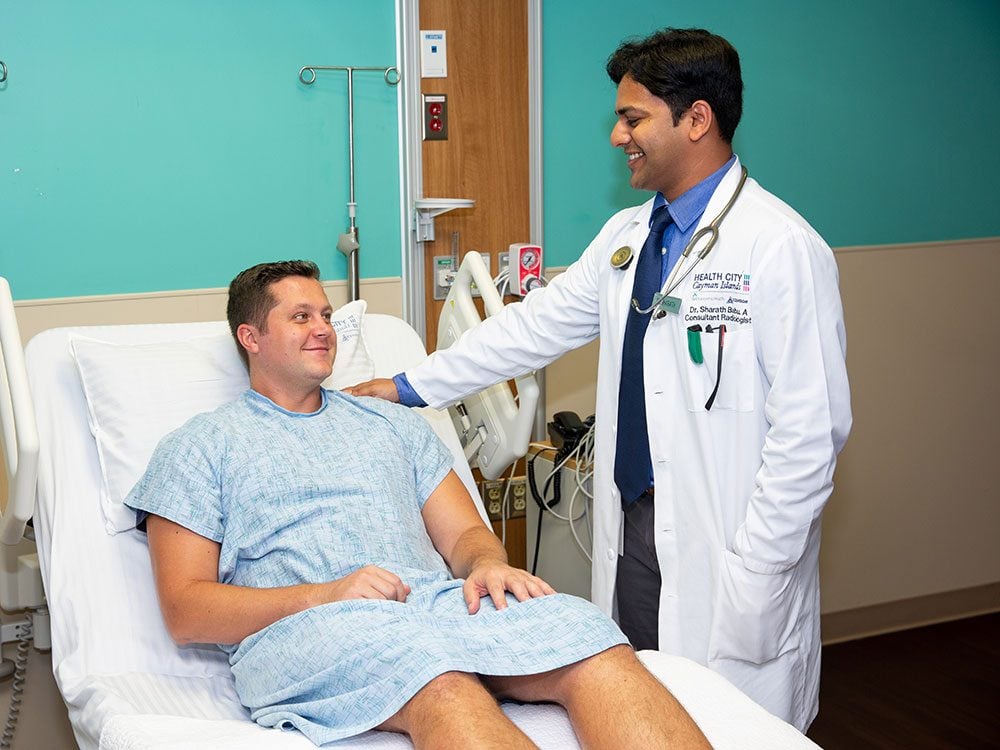
It complements established Canadian health care.
In order to ensure continuity of care, Health City Cayman Islands has designed a “patient pathway” that guides clients in and out of the Canadian health care system. Patient intake—which is handled through Health City’s bricks-and-mortar Canadian office in Hamilton, Ontario—involves the collection of medical records from either the patient’s GP or the patient themselves. These records are stored in a secure portal, which is shared with Health City physicians in the Cayman Islands. “After discharge, the electronic medical record is updated and sent back to the patient’s primary care physician,” Otter explains.
According to Health City neurosurgeon Dr. Susheel Wadhwa, that update includes a high degree of detail to help the patient’s primary care physician pick up exactly where Health City has left off. “Every patient gets documentation of the investigations we did, what procedure we carried out, the operative notes, and the make of the implants we used,” he says.
If the patient requires recommendations for physiotherapy upon their return, Health City’s board of directors—a panel of fully licenced health care professionals practicing in hospitals and clinics across Canada—can provide assistance in that regard as well.
These are the best exercises for seniors to build strength, improve balance and boost heart health.
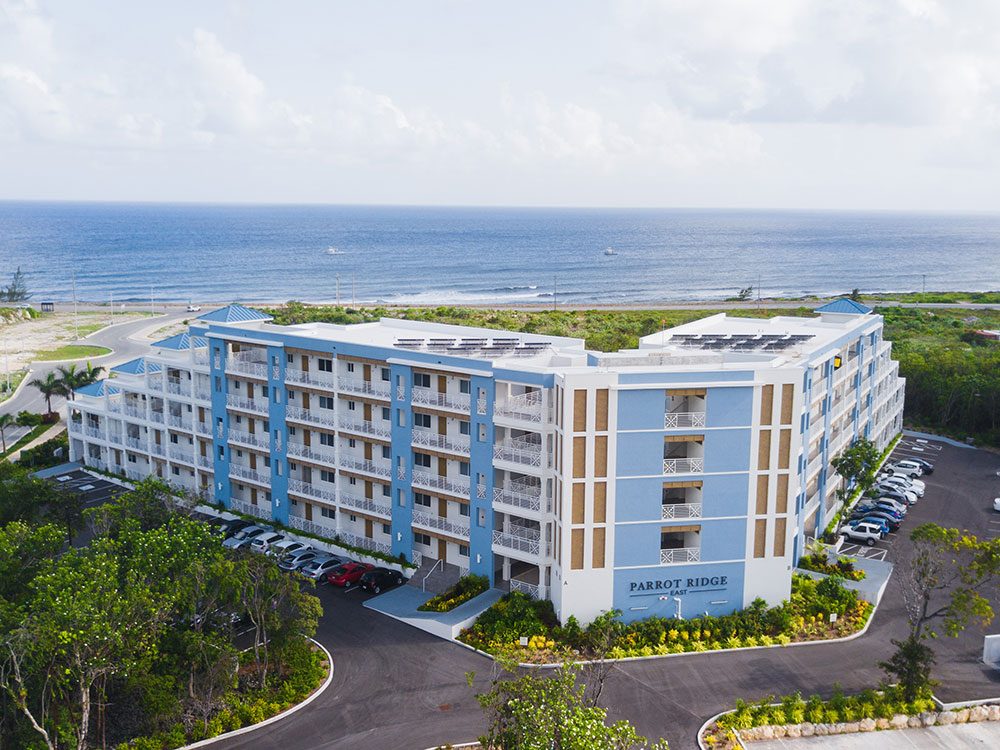
Treatment doesn’t end with surgery.
Following their surgery at Health City Cayman Islands, patients have the option to spend their two-week recovery period at Parrot Ridge—a Health City-operated apartment complex a mere five-minute walk from the hospital. The suite-style accommodations come equipped with a full kitchen, as well as a washer and dryer, and shared amenities include a freshwater pool.
Not only does this two-week convalescence give patients a chance to enjoy some rest and relaxation, it also serves a very practical function, according to Dr. Wadhwa. “We do this to make sure the operative site has healed completely, and to give the patients the opportunity to test themselves in a residential setting,” Wadhwa says. “They get to experience real world situations, and can have all of their concerns addressed before they go home.”
In the case of knee, hip and shoulder replacements, after-care also involves the immediate implementation of a physio plan. Although this service is included as a post-op procedure at Health City, it’s something Canadians would be paying out-of-pocket for even if they’d elected to have the surgery at home, as most physio isn’t covered by provincial health care plans.
“I think some people only stay for two weeks, but I made it three weeks, just to make the trip home a little more comfortable,” says Pilkington. “I saw a physiotherapist every Monday and Friday after the surgery, and they put me through my paces with the regular strengthening, stretching and range-of-motion exercises.”
Seventy-eight-year-old Bonnie Taylor of St. Jacob’s, Ontario, was also deeply impressed with the after-care she received following her hip replacement. “At least one of the surgeons came to see me every day to make sure all was well. They were very attentive,” Taylor says. “And the physio people were amazing. They must get so tired of doing all that counting day after day, but they were very patient!”
Regardless of how long they elect to stay on island, physio plans are designed to be continued following the patient’s return to Canada. After-care also continues in the form of one-month, three-month and six-month follow-up video conferences with the very surgeon who performed their procedure.
These are the best vitamins and supplements to take after surgery.
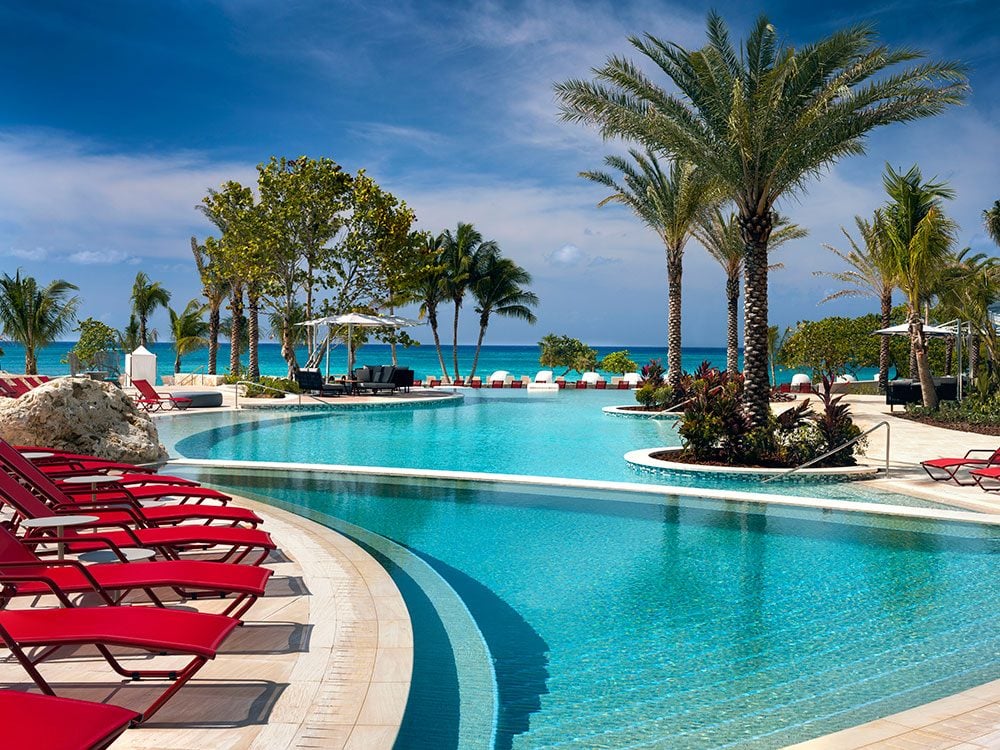
Patients recover in paradise.
Frankly, it’s hard to imagine a better place to convalesce than the Cayman Islands. Between its seemingly endless stretches of sandy beach, crystal clear waters and classic rum cocktails (doctor’s orders permitting, of course), Cayman has earned a reputation as the sun destination of choice for bon viveurs. Often referred to as the “Culinary Capital of the Caribbean,” it’s become a bucket list destination for foodies, never more so than during the four-day Cayman Cookout held each January. This star-studded event brings some of the world’s top chefs to George Town, where they whip up cutting-edge cuisine against the beautiful backdrop of Seven Mile Beach—recently named one of the world’s best beaches by Reader’s Digest.
Although Parrot Ridge’s proximity to the hospital is a big bonus, there’s no requirement that patients spend their two-week convalescence on-site, and the island of Grand Cayman abounds with luxurious barrier-free accommodations. Conveniently located a mere 10-minute drive from Health City is the Wyndham Reef Resort, which offers a relative rarity for the Cayman Islands with its “all-inclusive” option. It’s the glitzy resorts of Seven Mile Beach that remain the most popular with tourists, however, with the breathtakingly beautiful Kimpton Seafire (above) boasting accessible suites with barrier-free showers and a lift for its pool. No less impressive are the condo-style suites at Caribbean Club, which give recovering patients the chance to ease into their new joints in a residential setting, just as Dr. Wadhwa recommends.
Want to make the most of your time in the Culinary Capital of the Caribbean? From world-renowned restaurants to must-see attractions, these are the best things to do in the Cayman Islands.
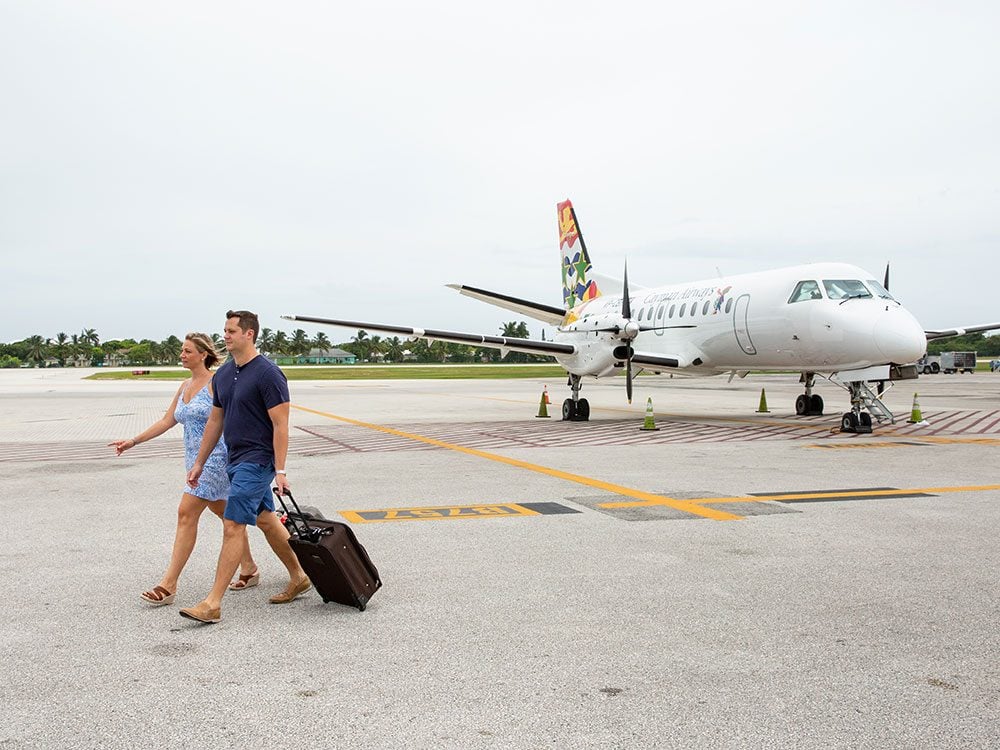
The Cayman Islands are easier to get to than ever before.
When you’re in desperate need for surgery, the last thing you want to do is waste precious time waiting for your connection at the Miami airport. The good news? Both Air Canada and West Jet offer direct flights from Toronto to George Town (Grand Cayman) year-round, with expanded service during high season (December to April). In real terms, this means you can get from the Big Smoke to the Cayman Islands’ capital in a scant four hours. (These airport tips for seniors will also come in handy.) Patients are welcomed on the tarmac by a Health City representative and then board a shuttle for the 30-minute drive to the facility. “We know it can be a bit unnerving arriving in a different country for an operation, so we do everything we can to make you feel comfortable and cared for,” says Otter.
No matter how long you stay in the sunny south, these Cayman Islands attractions are absolutely essential.